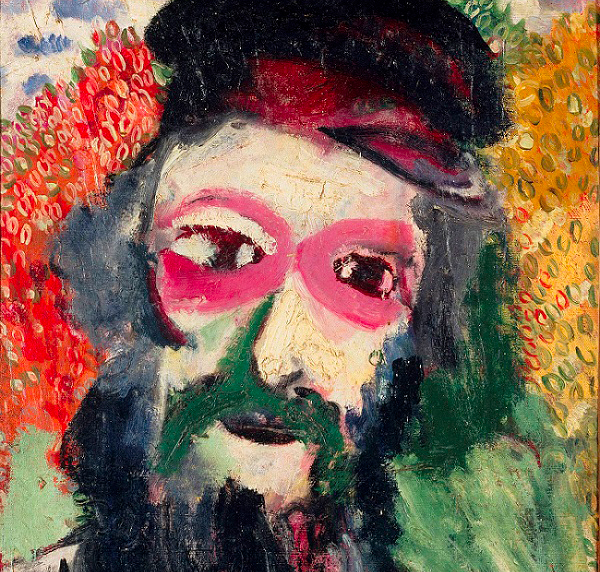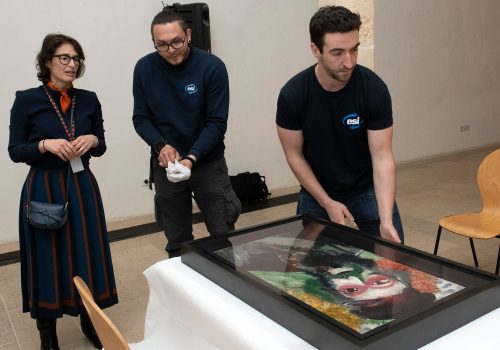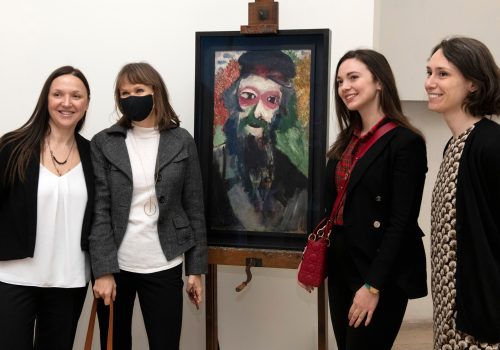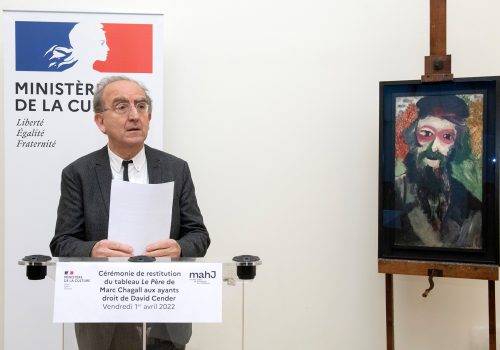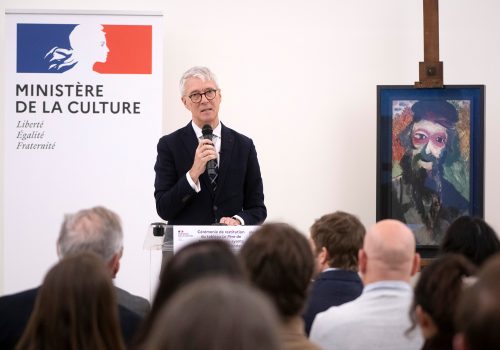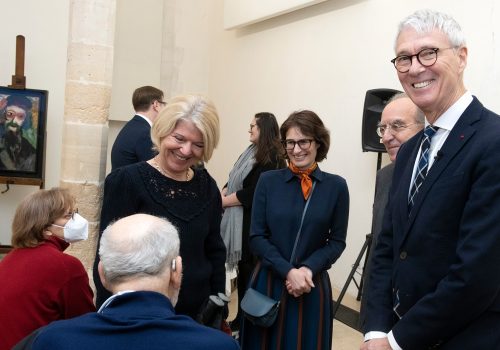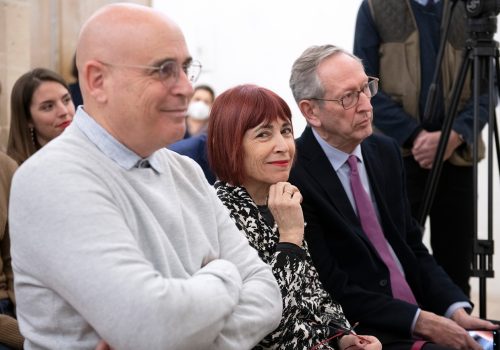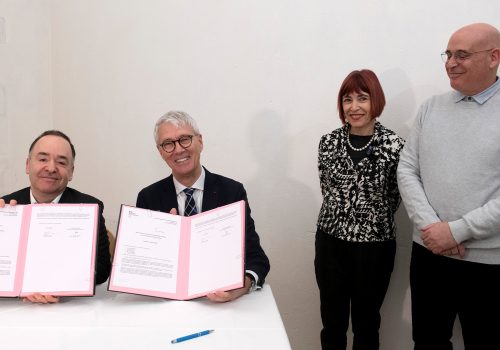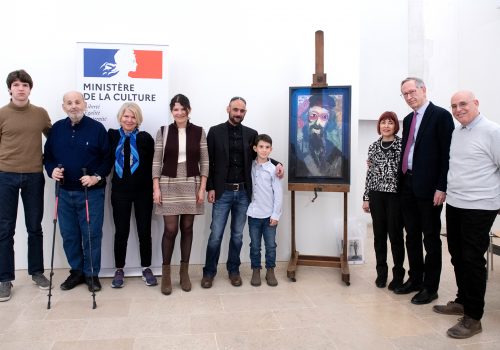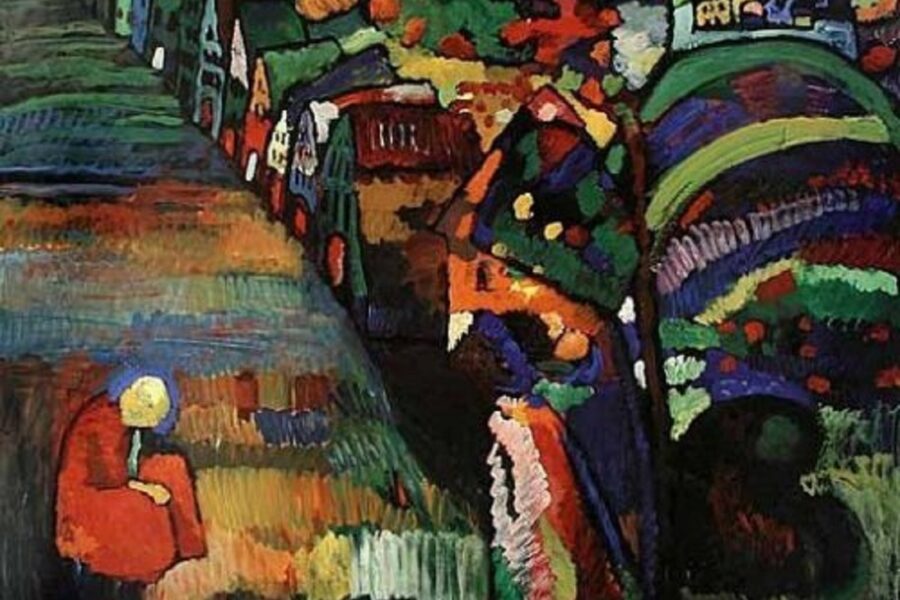Spring 1940, David Cender and his family are removed by the Germans from their residence in Lodz, Poland and transferred to a ghetto. They left behind almost all their possessions…
In 1928, David Cender, a Jewish violinmaker and musician from Lodz, Poland, acquired the painting Le Père, by Marc Chagall, from the well-known art dealer Abe Gutnajer in Warsaw.
In 1940, David and his family were abruptly removed from their residence by the Germans and relocated to the Lodz ghetto. Because David was forced to quickly abandon his home, he had to leave the painting behind and his house was looted shortly after.
David survived the war, but his wife and daughter were not that fortunate. David never saw the painting again.
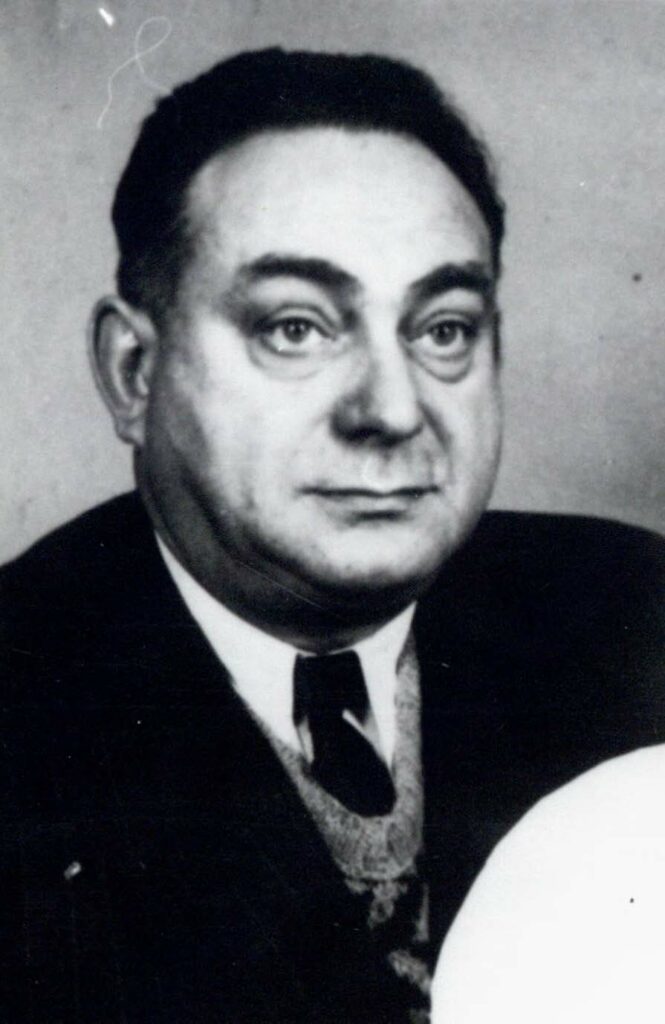
David Cender
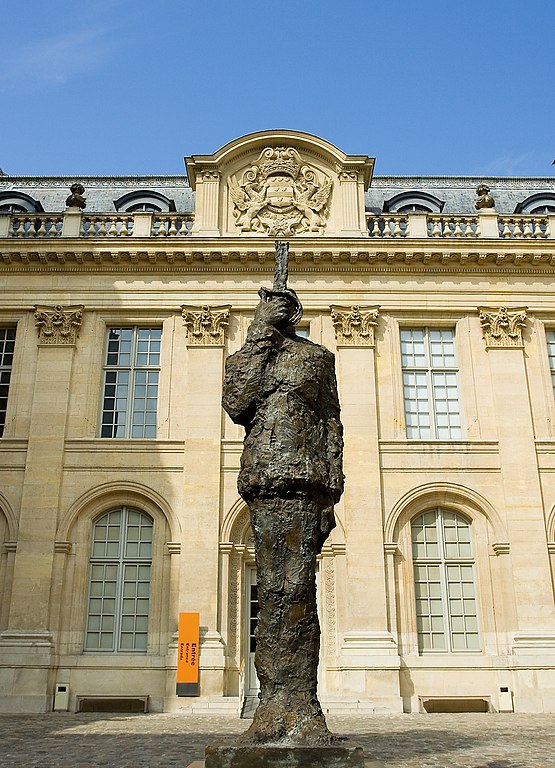
Musée d’art et d’histoire du Judaïsme, CC BY-SA 4.0, via Wikimedia Commons
Rediscovering Le Père
In October 2020, Mondex discovered Le Père at the Musée d’art et d’histoire du Judaïsme (MAHJ) in Paris. How the painting had ended up in this museum is a fascinating story.
Chagall had painted the artwork, which represents his father, during the early years of his career, in 1911, when he just moved from Russia to Paris. Abe Gutnajer discovered the painting during one of his many trips to European cities and purchased it in 1928 or earlier to expand his gallery’s inventory.
Nonetheless, the painting still found its way back to Paris. The location of Le Père between 1940 and 1953 is unknown. However, in 1953, the painting was loaned to an exhibition in Turin, Italy, by Chagall himself.
Research shows that Chagall regularly reacquired his own artworks on the art market, especially his earlier artworks. Many of these reacquisitions eventually ended up in Chagall’s estate, which he left to his heirs after he passed away in 1985. Le Père was part of this estate, which similar to almost all other Chagall artworks in his estate, was donated to the French state. Le Père ended up at the Musée national d’Art moderne (MNAM), Paris, which later loaned it to the MAHJ.
The precise circumstances under which Chagall had reacquired the looted painting are uncertain. However, Chagall’s interest in reacquiring his own art explains how this painting, which he originally made in Paris, returned to the city.
Shortly after Mondex discovered the painting at the MAHJ with the help of its attorney Me Melina Wolman of Pinsent Masons, it requested the MNAM to restitute the artwork. Because the painting was located at a state museum, Mondex worked closely with the French Ministry of Culture and its French legal team to arrange the restitution. The ministry’s approach to this claim was objective and transparent, with a strong desire to resolve looted art issues in the state collection.
As a result of the extensive research completed by Mondex and the legal arguments of its French legal team, in late 2021, the French Ministry of Culture, in agreement with the MNAM, agreed to restitute the painting. However, in France, the decision of the ministry is not sufficient for the deaccession of a painting from the state collection. Deaccession was only possible through the introduction of a specific restitution law for the painting. Fortunately, this law was introduced expeditiously and was unanimously approved first by French parliament and then by the French senate.
Restitution Ceremony
The restitution of the Chagall painting was an extraordinary event. The French Ministry of culture, in collaboration with MNAM, recognized the importance of this outcome on April 1, 2022, with a restitution ceremony held at the Musée d’art et d’histoire du Judaïsme (MAHJ) in Paris. As the ceremony’s honoured guests, David Cender’s family members were finally reunited with Le Père in this historic and moving ceremony.

